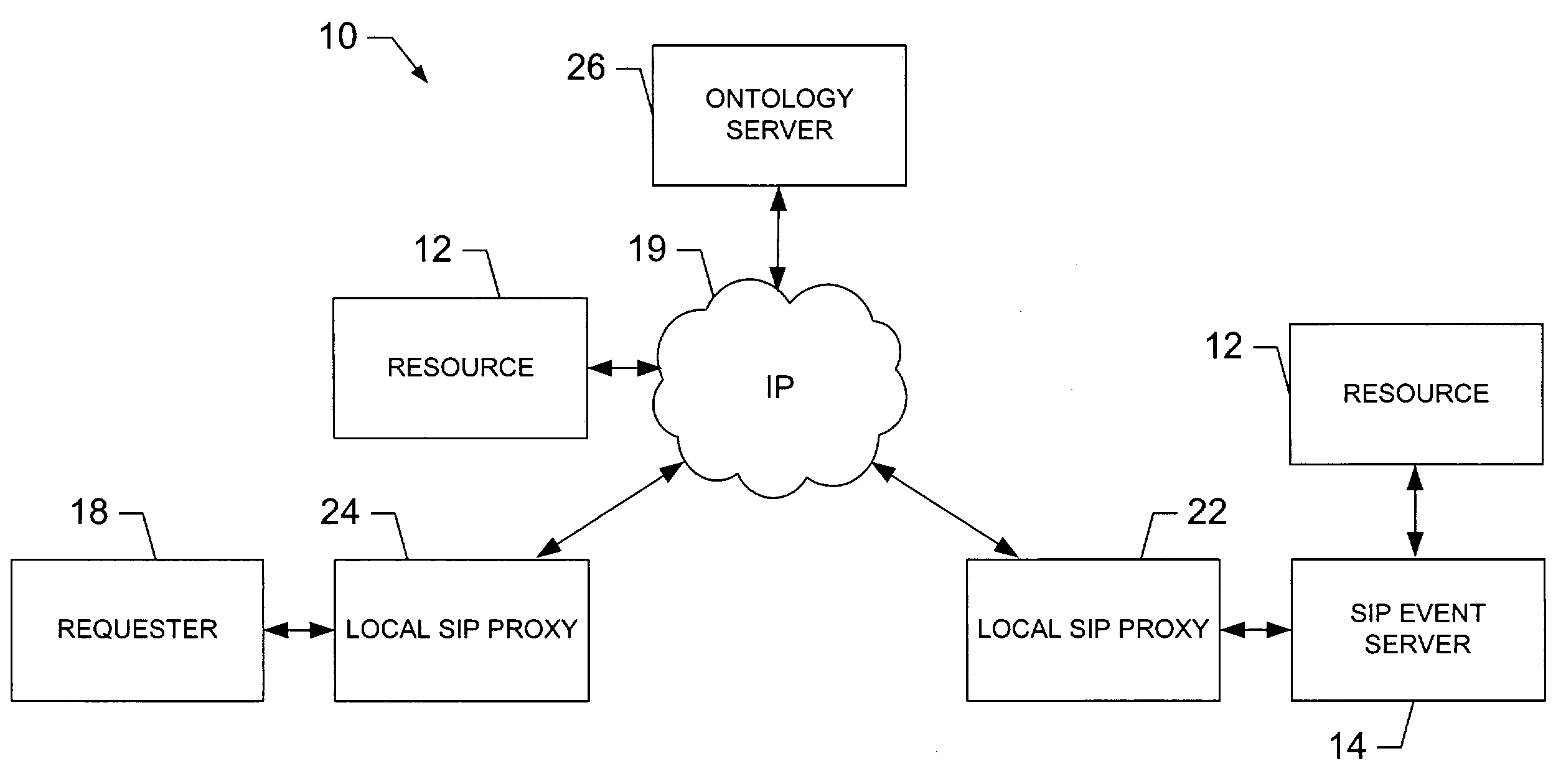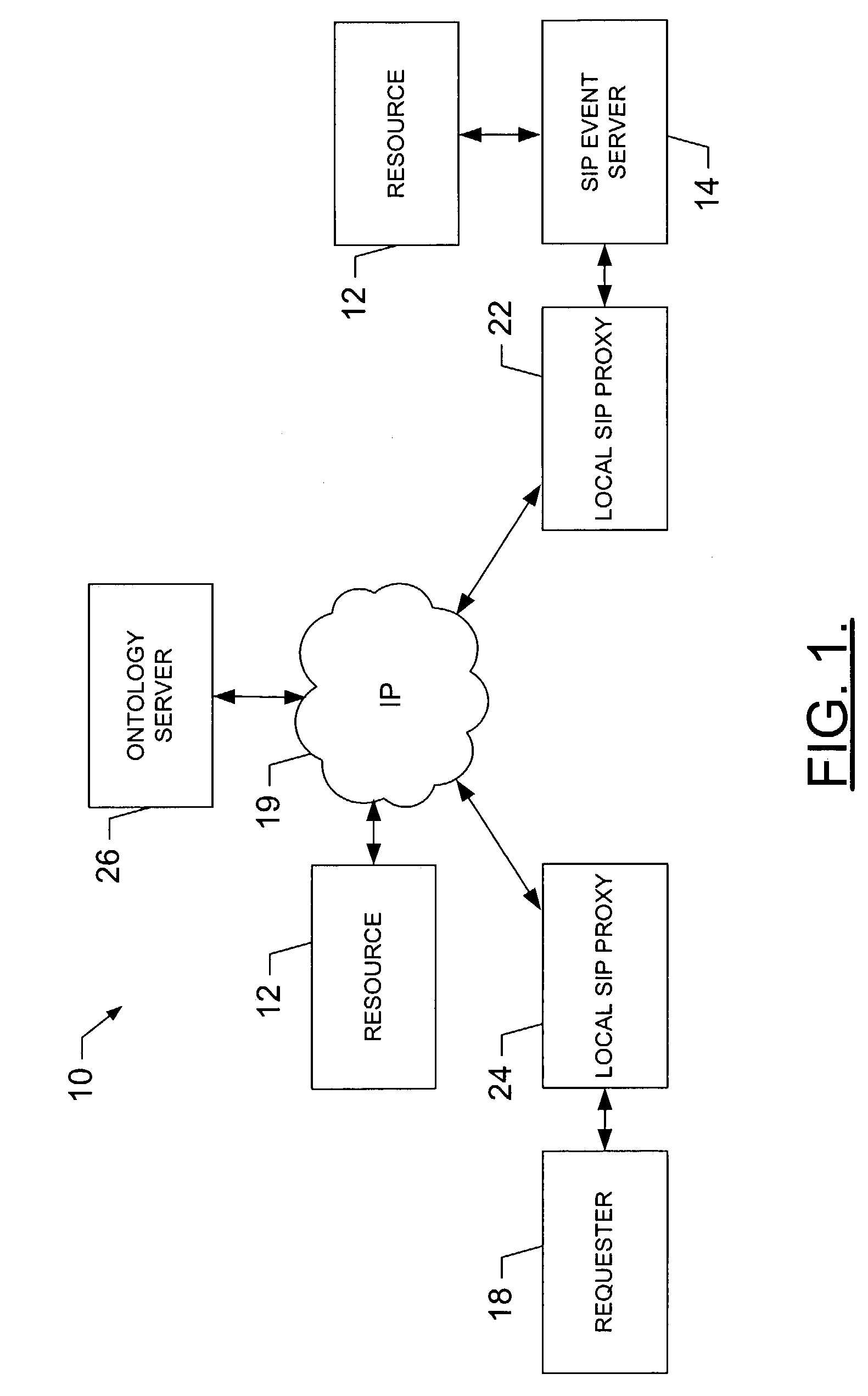Systems and methods for event semantic binding in networks
a network and event technology, applied in the field of telecommunications networks, can solve the problems of inability to specify the semantics of specific events, system and method for uploading event information, and process may soon become a significant bottleneck, and achieve the effect of facilitating uniform semantic descriptions, reducing the complexity of event processing, and solving the ambiguity of application semantics of events
- Summary
- Abstract
- Description
- Claims
- Application Information
AI Technical Summary
Benefits of technology
Problems solved by technology
Method used
Image
Examples
Embodiment Construction
[0020]The present invention now will be described more fully hereinafter with reference to the accompanying drawings, in which preferred embodiments of the invention are shown. This invention may, however, be embodied in many different forms and should not be construed as limited to the embodiments set forth herein; rather, these embodiments are provided so that this disclosure will be thorough and complete, and will fully convey the scope of the invention to those skilled in the art. Like numbers refer to like elements throughout.
[0021]Referring now to FIG. 1, a general system 10 is shown that supports content and service registration, query, subscription, and notification in networks. The system generally includes one or more resources 12, two of which is shown, , an SIP event server 14, a requester 18, an ontology server 26, and an IP communications network 19 through which the service / content provider, the SIP event server, the requester and the ontology server communicate.
[0022...
PUM
 Login to View More
Login to View More Abstract
Description
Claims
Application Information
 Login to View More
Login to View More - R&D
- Intellectual Property
- Life Sciences
- Materials
- Tech Scout
- Unparalleled Data Quality
- Higher Quality Content
- 60% Fewer Hallucinations
Browse by: Latest US Patents, China's latest patents, Technical Efficacy Thesaurus, Application Domain, Technology Topic, Popular Technical Reports.
© 2025 PatSnap. All rights reserved.Legal|Privacy policy|Modern Slavery Act Transparency Statement|Sitemap|About US| Contact US: help@patsnap.com



